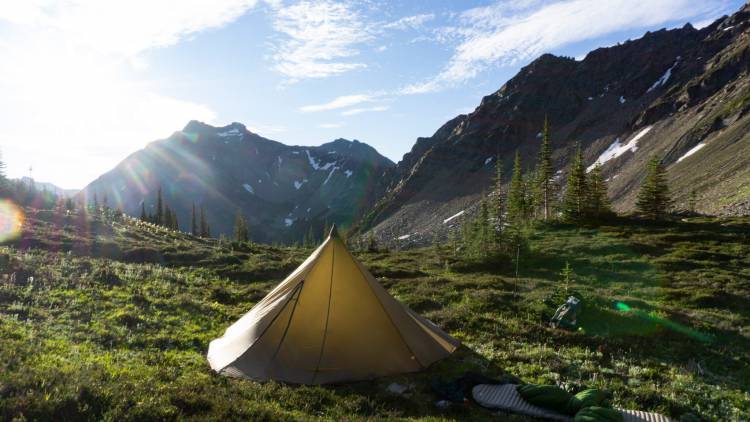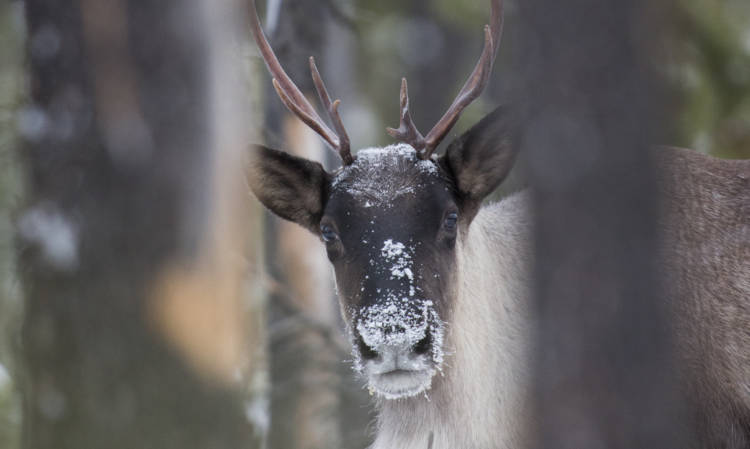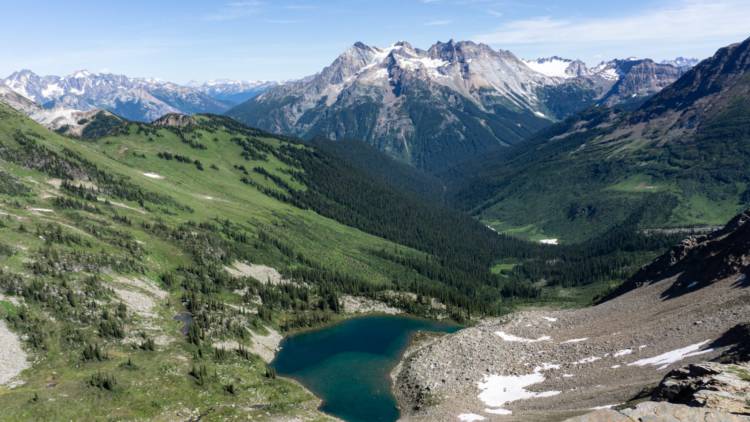Save Argonaut Creek from old growth logging
Davey and I have been hiking for five hours and only made it four kilometres. The dense and sometimes eight foot high Devil’s club has slowed our progress. Often the quickest way to move is above ground on slippery spruce or cedar logs that tower ten feet above the prickly shrub. We came here because we knew it would be a tough journey. We came here because we wanted to witness and experience Argonaut Creek: an intact old growth drainage in the Northern Selkirk Mountains before it was roaded and logged.
Earlier in the day, we parked our truck on an eroding and steep cut-bank and talked to the contractors punching in the first section of road into Argonaut Creek. We stumbled over and around the cut, 50 metre tall, old growth cedar and hemlock trees that lie in the middle of the proposed road line. The giant trees were hand felled but haven’t been picked up or processed by the crew yet.
Our destination was the high country. As we pressed on, soon cedar hemlock forests gave way to the fresh smell of subalpine fir and spruce, then high alpine heather ridges and alpine lakes of upper Argonaut Creek. Caribou country.

Earlier in the summer I’d learned of plans from BC Timber Sales (BCTS) to log more than three square kilometres of this intact rainforest north of Revelstoke, destroying critical endangered, southern mountain caribou habitat. The area is primarily old-growth rainforest, with massive cedars and hemlocks, over 50 metres tall and many hundreds of years old. A female wolverine and her pups or kits are believed to call the valley home for some part of the year. It’s also summer and early winter habitat for the North Columbia caribou herd, whose 150 plus caribou roam the wet forests and the rugged peaks of the Selkirks, Monashees, and Rocky Mountains north of Revelstoke.
The North Columbia herd is the southernmost herd left in B.C. with the best long term chance of survival. Only 40 percent of the core habitat for caribou in the Revelstoke area is protected. The caribou here use low elevation forests for much of the year. These same forests are also highly valuable to the logging industry. Logging and other detrimental activities for caribou has continued in the majority of caribou habitat in this region.

This area is part of what some call Canada’s Forgotten Rainforest, the Inland Temperate Rainforest. A vast, rugged, and globally unique ecosystem that stretches from Northern Idaho to Prince George, spans multiple mountain ranges and is home to many species of plants and lichen that only exist in this rare rainforest. The wet cedar hemlock rainforests of this region are the ecosystem’s crown jewel. But those same cedar hemlock rainforests are being systematically logged at an alarming rate. Only five percent of the Inland Temperate Rainforest remains as old growth. It’s no wonder caribou populations have been lost in parts of this region. Further south we recently lost two herds in the Southern Purcell and South Selkirk mountains. As industrial disturbances such as logging increase, caribou populations decline.

It’s not only environmentalists who are calling on the provincial government to stop logging these non-renewable old growth forests. A recent provincial review conducted by Garry Merkel and Al Gorley found that a paradigm shift is necessary to manage B.C.’s biodiversity and old growth forests. The authors recommended 14 steps to preserve the remarkable old-growth found in the province including immediately deferring logging in old forests where ecosystems are at high risk of irreversible biodiversity loss. Argonaut Creek is one of these areas where biodiversity and old growth forest is at risk.
On the last day of our trip, we packed up camp and headed towards a pass at the upper reaches of Argonaut Creek. Just above a spectacular alpine lake, a single fresh caribou track was imprinted in the mud beside a small stream. A reminder that this is their home here at the northern reaches of the Columbia River. It’s a small but significant symbol that lingers in my mind and reminds me why we must keep Argonaut Creek wild, and why we all must all take actions to preserve wild places.
Tell the government to put a stop logging old growth caribou habitat in the Argonaut Creek drainage.



